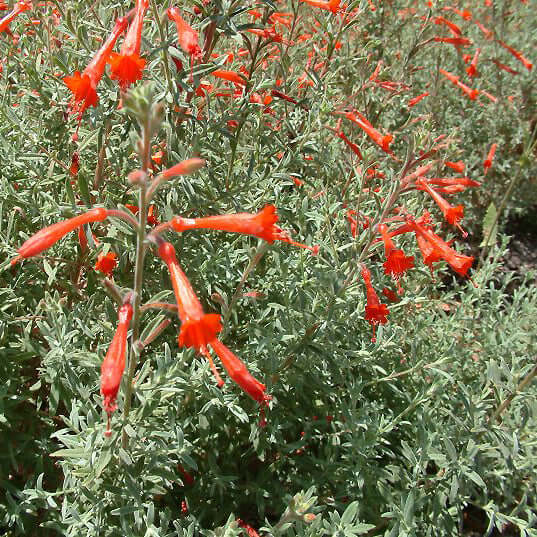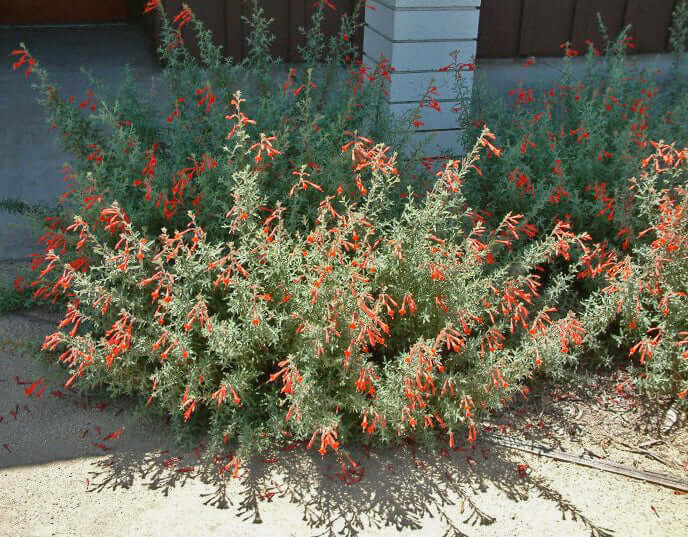
California Fuchsia
Epilobium canum (Zauschneria californica)
Delivery
24-hour money-back guarantee
Free delivery on orders over $349
Big Project? Call 888-444-1126 for bulk rates!
For the plant purist that prefers the au naturel, Epilobium canum (formerly Zauschneria californica) is ideal. This summer-blooming California native plant is perfect for the waterwise landscape. California Fuchsia is a naturally sprawling, mounding perennial with grey-green leaves and vibrant orange-red, trumpet-shaped flowers that act like a dinner bell for the hummingbirds.
Epilobium canum is naturally found throughout the state on dry, rocky hillsides and canyons, and is the perfect addition in a dry garden, rock garden, California native garden, or on slopes for erosion control. Commonly known as the California Fuchsia or Hummingbird Trumpet, Epilobium canum is pollinated by hummingbirds and is a must have for the Hummingbird-friendly garden.
This species spreads by rhizomes and seeds, and is perfect for that wild area in your garden or slopes designed by Mother Nature to create a restorative natural landscape. Although there is variability in the size of Epilobium canum, it is not as low as ‘Everett’s Choice’ or as upright as ‘Catalina’.
California Fuchsias are low-maintenance and drought-tolerant making them ideal for busy gardeners who want a plant that looks beautiful without requiring a lot of attention. The show stopping, orange-red, summer flowers of Epilobium canum appeal to hummingbirds and humans and are sure to bring joy and excitement to your outdoor space.
How big does California Fuchsia grow?
When does it bloom and what do the flowers look like?
What kind of light and soil does it prefer?
Does it need pruning or special care?
3-6 ft.
3-5 ft.
Low
Hummingbirds, Pollinators
Perfect Your Landscape With Expert Help
Customize your yard with confidence. Schedule your free consultation today and bring your outdoor space to life!



